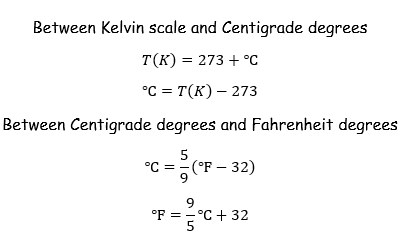TOPIC 8: TEMPERATURE

JOIN US WHATSAPP CLICK HERE
JOIN US TELEGRAM CLICK HERE
Concept of Temperature
The Term Temperature
Define the term temperature
Temperature is property of a body, which decides which way heat will flow when it is placed in contact with another body.
Temperature is defined as the degree of hotness or coldness of a body. It is the one of the factors which make scientists to determine the amount of heat energy possessed by a body.
The SI Unit of Temperature
State the SI unit of temperature
The SI unit of temperature is Kelvin (K). Kelvin scale is known as absolute temperature scale or thermodynamic scale. The lowest temperature in kelvin scale is 0K known as Absolute zero.
Commonly in thermometers we encounter the unit Celsius degree (0C) another scale is called Fahrenheit scale.
Conversion between temperature scales.
The values of temperature can be converted into different units by using specific formulae as below;

Measurement of Temperature

